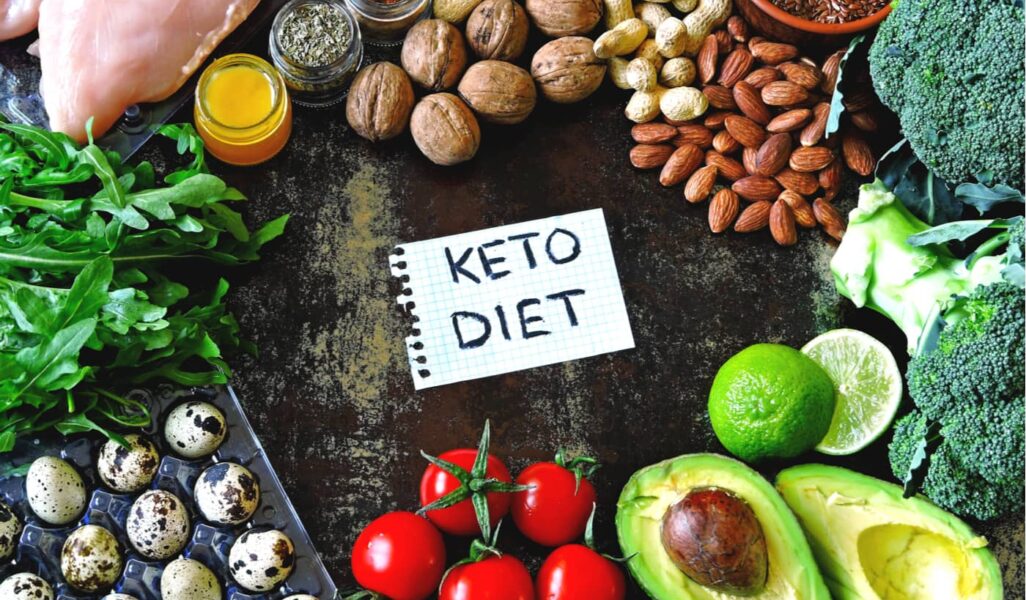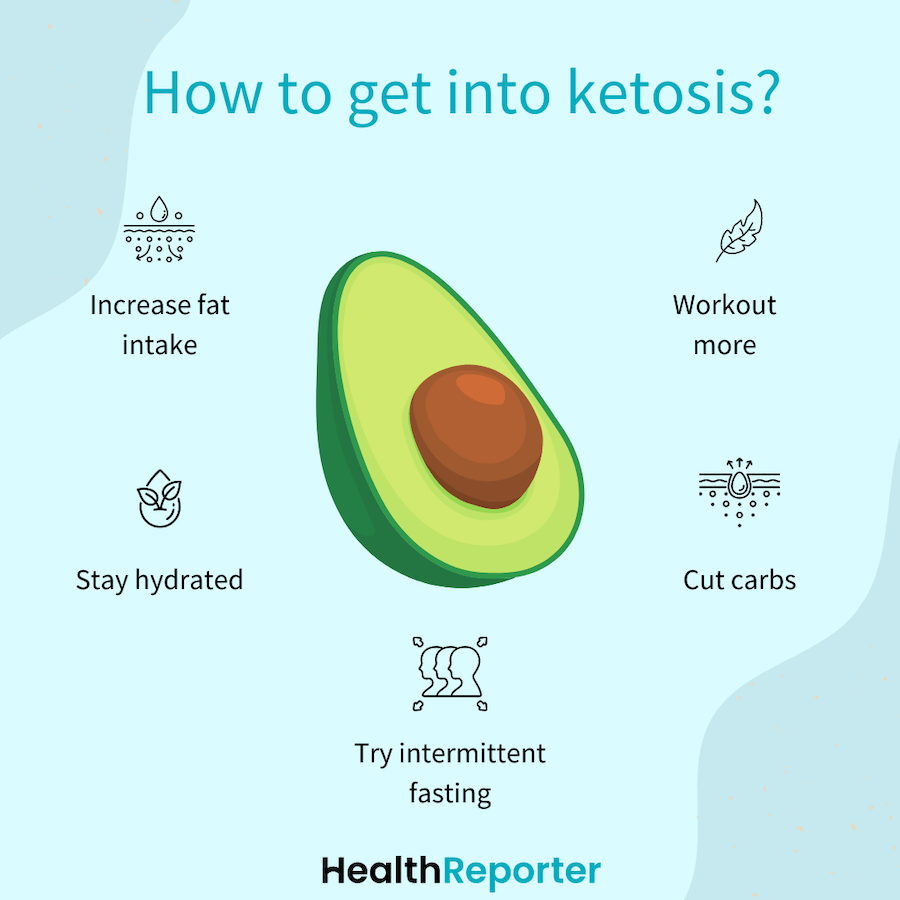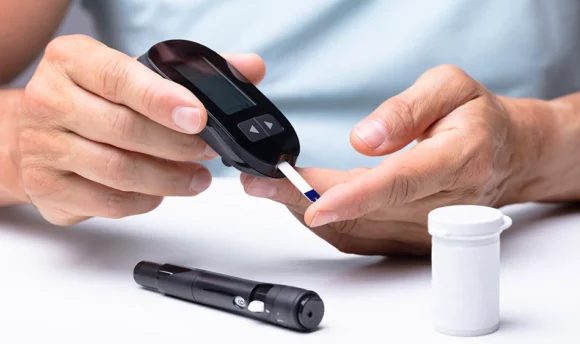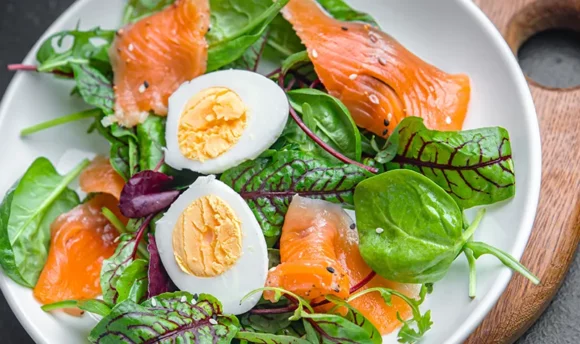How Long Does It Take to Get Into Ketosis? Getting Into the Zone
Achieving ketosis is one of the main goals when starting a keto diet. Learn when does ketosis start and how to get into it in no time.

You’ve ditched carbs, indulged in fatty foods, and kept an eye on your protein intake.
If time passes and you’re still not sure if you’ve reached ketosis, it’s tricky to know what to do next.
When following the keto diet, ketosis is usually the objective. But how long is ketosis going to take?
Often, the unknown answers leave participants unsure of their efforts, and many contemplate quitting the diet. If this sounds like you, it’s time to quit wondering and find some answers.
Learn how long it takes to get into ketosis, how to get there, and what to expect when ketosis starts.
How Long Does It Take to Get Into Ketosis?
When you lower your carb intake to under 50 grams per day, most people can expect to get into ketosis within a few days. For some, it may take up to a week or more.
The time to achieve ketosis varies from person to person. Variables include:
- Age
- Metabolism
- Health status
- Fitness level
- Eating habits
- Getting the ratios of carbs, fat, and protein wrong
The quickest way to reach ketosis is to be consistent and follow the guidelines as closely as possible.
But don’t be discouraged if you don’t reach ketosis fast. All keto dieters are different, and the body will transform in its own time. Be patient! Your body is working hard.
Getting Into Ketosis
Ketosis is a metabolic state, and getting into it means switching up your metabolic functions.
Ordinarily, the body uses glucose from carbohydrates to fuel your system. When you slash your carbohydrate intake, glycogen stores deplete, and your body quickly searches for fuel elsewhere.
It triggers ketone production, and the body turns to fat stores, making ketosis a reliable method for fat loss.
People achieve ketosis with a ketogenic diet. The low-carb, high-fat diet moves your body into ketosis as it progresses to a new way of operating.
Ketosis can improve insulin resistance, manage blood sugar, and promote appetite control.
How to Get Into Ketosis: 5 Smart Strategies
The road to nutritional ketosis begins by altering your diet. This is the primary step and makes up part of our top 5 tips to speed up ketosis.

#1 Eat less than 50 grams of carbs per day
Carb restriction is essential for ketosis. It allows the body to produce ketones that trigger the body to start burning fat.
Carbs should make up only 5–10% of your daily calorie intake.
#2 Ramp up your fat intake
Fat is essential to ketosis. A large chunk (around 70–80%) of your daily calories should come from healthy fats like fatty meats, fatty fish, eggs, nut butter, olive oil, and coconut oil.
Have fun with it, as you have permission to eat fats!
#3 Don’t forget protein
The ketogenic diet calls for a moderate protein intake. Too much protein will end ketosis, while a sufficient amount protects muscle tissues and supports lean muscle mass.
#4 Try intermittent fasting
Intermittent fasting can help you enter ketosis faster. Fasting is when you cut out food from specific hours or days. During fasting, your body switches fuel from carbs to fat, precisely as the keto diet does.
Combining the two methods can increase your success rate.
#5 Workout more
Exercising uses up glycogen stores, increasing ketone levels as you’re not replacing the lost glucose with carbs.
When Does Ketosis Start?
The ketosis process begins when your body starts to produce ketone bodies, usually within 24 hours of strictly following a ketogenic diet or even 12 hours when practicing intermittent fasting.
Ketosis usually kicks in around days 3–4 for the average adult with consistent carb restriction.
You can recognize when you enter ketosis by looking out for particular signals. The most common experience, and the most unpleasant, arrives within the initial days of the diet.
It’s a set of flu-like symptoms that keto dieters label keto flu. It can cause headaches, brain fog, nausea, and fatigue.
It shows your body is undergoing changes and entering ketosis. Symptoms are temporary, and you can ease them by staying hydrated, resting, and ensuring a healthy electrolyte balance.
You may also notice bad breath that smells like nail polish remover and weight loss (usually water weight).
Check your blood ketone levels using a blood ketone meter to ensure that you’re entering ketosis. You can also measure ketones in your breath and urine with a breathalyzer or urine test strips. However, blood ketone meters are the most accurate way to detect ketone levels.
It is safe to stay in ketosis for around 6 months.
A Word From Nutritionist
Ketogenic diets are designed to encourage nutritional ketosis to burn fat, lose weight, and promote other health benefits.
Keto dieting has been used for decades for exceptional fat-burning results. It’s a very low-carbohydrate diet where the body converts fat for fuel instead of stored glucose.
The carb reduction and consumption of high-fat foods induce ketosis quite quickly. How quickly, however, depends on the individual. Committing yourself to the keto rules is the best way to start producing ketones to enter ketosis as soon as possible.
Eat lots of healthy fats like avocados, coconut oil, and meats to support a healthy diet. Eliminate simple carbs, and keep a careful watch on how much protein you eat.
Throw intermittent fasting and exercise into the mix, and you’ll enter ketosis sooner rather than later.
Conclusion
We’ve shared everything you need to know about getting into ketosis, from how soon to expect it to speed-up tips. Don’t stress yourself out waiting for ketosis to arrive. It will happen when your body safely transitions.
Speak with your doctor before experimenting with low-carb diets. And if ketosis doesn’t come when you expect it, get back in touch to discuss your dietary habits. You can also arrange a test for your ketone levels.

















































 Select your language:
Select your language: 








